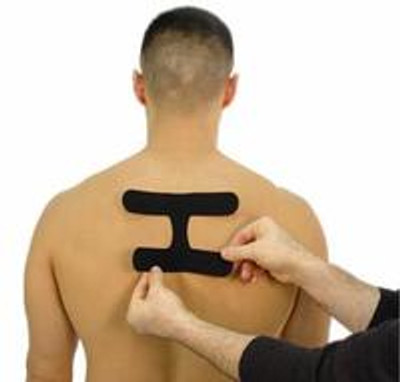 7th Jun 2015
7th Jun 2015
What is Kinesio tape and Why do Physical Therapists Use it?
So! Let’s talk Kinesio tape. I’m a recent convert as is our clinic. As a result, most patients that come in leave with some sort of taping. Mummy jokes aside, Kinesio tape is a rockstar physical therapy tool because it can help a broad range of issues ranging from: neck and back trigger points, improve shoulder posture, knee pain, help in correcting ankle over-pronation or supination and improving lymphatic drainage in injuries.
What is Kinesio Taping for Physical Therapy?
Chiropractor Dr. Kenzo Kase developed Kinesio taping in 1979. This latex-free tape uses glue that is heat activated so it is wearable for a few days, even when a patient exercises or showers. In a nut shell, it can be used to help reduce pain, re-educate the neuromuscular system, increase circulation, optimize performance and prevent injuries.
Kinesio taping is a rehabilitative method and in order to be used properly should be applied by a trained professional with appropriate knowledge of anatomy and muscle fibers. Since it’s a technique, the amount of pull, the direction of the tape and even the length of tape is customized to specific physical therapy goals. What’s cool about the tape is that it’s not restrictive, so it provides support without inhibiting range of motion.
How to use Kinesio tape
Kinesiology tape can be applied in different ways to achieve different results. There are three main techniques:
- Neurosensory – to relieve acute or chronic pain
- Microcirculatory – to reduce swelling and bruising by enhancing lymphatic drainage
- Structural – to support injured areas and encourage proper postural and movement patterns
| Neurosensory | Microcirculatory | Structural |
Each of these techniques requires a different combination of two factors:
- 1.The amount of stretch in the affected muscle or muscle group
- 2.The amount of stretch in the tape as it is applied
With that in mind the following are general guidelines for each of the three taping techniques:
- 1.Neurosensory – stretch the muscle, not the tape
- 2.Structural – stretch the tape, not the muscle
- 3.Microcirculatory – stretch the muscle and the tape
In a nutshell, the technique involves applying tape directly over an injured area, including its perimeter. In most cases, the muscles should be held in a stretched position while the tape is applied. Unless the goal is to provide structural support, the tape itself does not usually require additional stretching as it is applied. The natural elasticity of the tape creates a gentle lifting action of the skin, which activates both neurological and circulatory healing mechanisms. Also reducing pressure on pain receptors can rapidly relieve acute pain, while improving blood flow and lymphatic drainage which will reduce swelling and facilitate healing.
But perhaps the thing that rocks most about Kinesio tape is that while patients wear the tape, they are reminded to move in healthier ways to improve posture and prevent injuries. This reminder is incredibly important when trying to retrain patients to move in ways that sustain health and wellness.
For more information and product recommendations see ProHealthcareProducts.com








